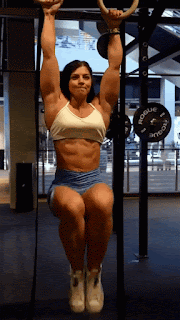Achieving a flat stomach involves a combination of regular exercise, a healthy diet, and lifestyle choices. Here is a simple and effective home workout routine for women aiming to flatten their stomachs. Remember to pair these exercises with a balanced diet and cardiovascular activities for optimal results.
1. Plank:
- Start in a forearm plank position, keeping your body in a straight line.
- Engage your core, hold the position for 30-60 seconds.
- Repeat for 2-3 sets.
2. Mountain Climbers:
- Begin in a plank position.
- Alternate bringing your knees towards your chest in a running motion.
- Do this for 1-2 minutes.
3. Russian Twists:
- Sit on the floor with your knees bent and lean back slightly.
- Hold your hands together and twist your torso to the right, then to the left.
- Repeat for 2-3 sets of 15-20 twists on each side.
4. Leg Raises:
- Lie on your back with legs straight.
- Lift your legs toward the ceiling, then slowly lower them without touching the floor.
- Do 2-3 sets of 15-20 repetitions.
5. Bicycle Crunches:
- Lie on your back, lift your legs, and mimic a bicycle pedaling motion.
- Bring your right elbow towards your left knee and vice versa.
- Do 2-3 sets of 15-20 reps.
6. Reverse Crunches:
- Lie on your back with legs lifted and knees bent at a 90-degree angle.
- Contract your abs to lift your hips off the floor.
- Do 2-3 sets of 15-20 reps.
7. Flutter Kicks:
- Lie on your back, lift your legs slightly off the ground, and flutter kick.
- Keep your lower back pressed into the floor.
- Do this for 1-2 minutes.
8. Plank with Hip Dips:
- Start in a plank position and dip your hips to one side.
- Alternate sides, engaging your obliques.
- Do 2-3 sets of 15-20 dips on each side.
9. Standing Oblique Crunches:
- Stand with feet shoulder-width apart, hands behind your head.
- Lift your knee to the side while bringing your elbow down towards it.
- Repeat on the other side.
- Do 2-3 sets of 15-20 reps on each side.
10. High Knees:
- Stand and jog in place, lifting your knees as high as possible.
- Do this for 1-2 minutes.
Remember to maintain proper form during each exercise, and consistency is key for seeing results. Additionally, combine this workout routine with a nutritious diet and overall healthy lifestyle choices for the best outcomes. If you have any existing health concerns or conditions, it's advisable to consult with a healthcare professional before starting a new exercise program.
.gif)



